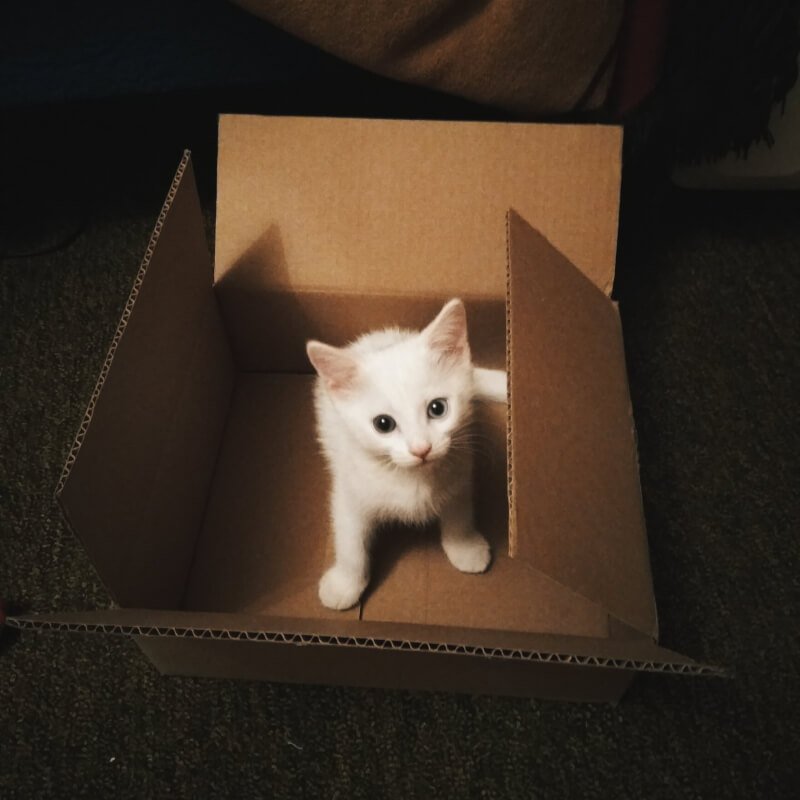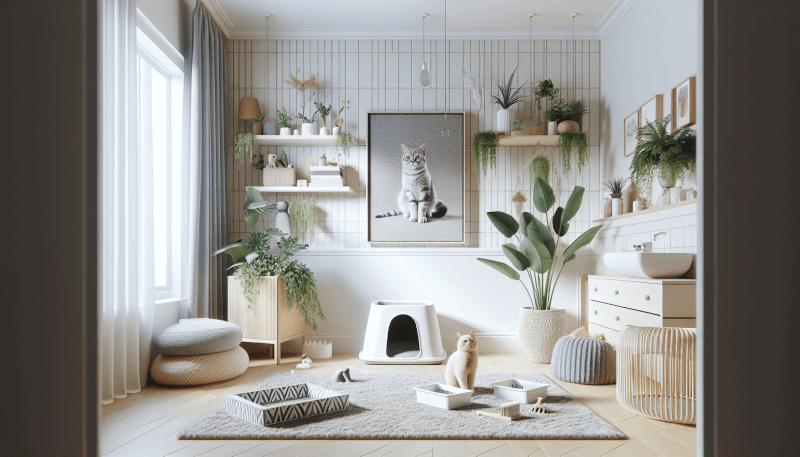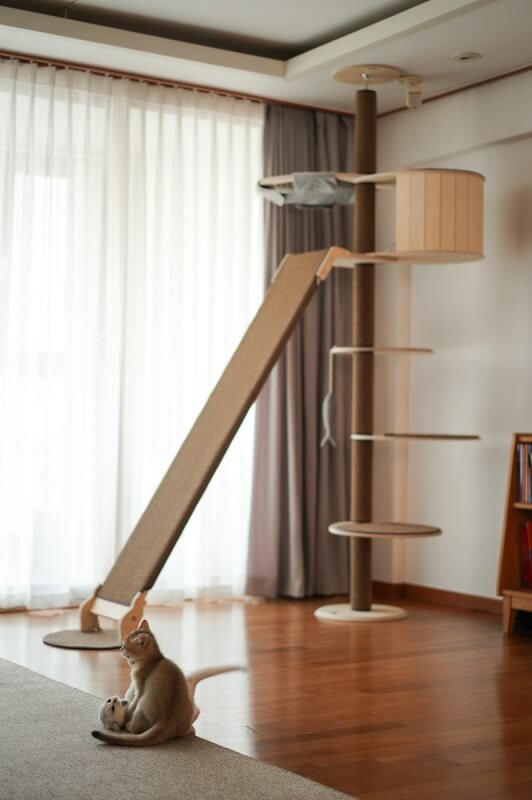If you’re a cat owner, you know that keeping a clean and odor-free home can be a challenging task. Luckily, there are plenty of litter box solutions available to make your life easier. From self-cleaning boxes to top-entry designs, there’s something for everyone. In this article, we’ll explore the most popular litter box solutions that will help maintain a fresh-smelling home while keeping your furry friend happy and comfortable. Say goodbye to unpleasant odors and hello to a clean and odor-free home with these innovative litter box solutions!
Choosing the Right Litter Box
Choosing the right litter box for your cat is essential to ensure their comfort and maintain cleanliness in your home. There are several factors to consider when making this decision, including the size of your cat, the type of litter box, the number of cats you have, and your cat’s preferences. By taking these factors into account, you can select the perfect litter box that suits your cat’s needs and promotes good hygiene in your living space.
Consider the Size of Your Cat
The size of your cat plays a crucial role in determining the appropriate litter box for them. Cats come in various sizes, from small to large, and it’s important to choose a litter box that allows your furry friend to move around comfortably. A litter box that is too small may lead to your cat avoiding it altogether or experiencing discomfort while using it. On the other hand, a litter box that is too big may make it challenging for your cat to access it easily. Consider the size of your cat and choose a litter box that provides enough space for them to comfortably maneuver.
Choose the Right Type of Litter Box
There are various types of litter boxes available, each with its own set of advantages and disadvantages. It’s crucial to choose the right type of litter box that suits both your cat’s needs and your preferences as a pet owner. Some of the most popular litter box options include enclosed litter boxes, self-cleaning litter boxes, automatic litter box systems, top entry litter boxes, sifting litter boxes, high-sided litter boxes, disposable litter boxes, hidden litter boxes, and litter box furniture. Let’s explore each of these types in detail to help you make an informed decision.
Consider the Number of Cats
If you have multiple cats in your household, it’s crucial to consider their number when choosing a litter box. Providing enough litter boxes for each cat is essential to avoid conflicts and promote good litter box habits. As a general guideline, it’s recommended to have one litter box per cat, plus an extra one. This ensures that each cat has their own space and reduces the likelihood of territorial issues. By providing an adequate number of litter boxes, you can maintain a harmonious environment for your feline friends.
Consider Your Cat’s Preferences
Every cat has their own unique preferences when it comes to litter boxes. Some cats prefer open litter boxes that provide easy access and offer a clear view of their surroundings. Others may prefer enclosed litter boxes that provide privacy and help contain any odor or litter scatter. It’s important to observe your cat’s behavior and preferences to determine the type of litter box they would feel most comfortable using. By considering your cat’s preferences, you can choose a litter box that they will readily accept and use consistently.
Enclosed Litter Boxes
Enclosed litter boxes, also known as covered litter boxes, are a popular option among cat owners. These litter boxes feature a top cover that provides privacy for your cat and helps contain any litter scatter or odor within the box. There are several benefits and disadvantages to consider when choosing an enclosed litter box for your feline friend.
Benefits of Enclosed Litter Boxes
One of the main advantages of enclosed litter boxes is the privacy they provide for your cat. Some cats may feel more relaxed and secure when they have a secluded space to do their business. The cover on enclosed litter boxes also helps prevent litter scatter, containing it within the box and minimizing mess around the litter box area. Additionally, the cover helps contain any unpleasant odors, keeping your home smelling fresh and clean.
Disadvantages of Enclosed Litter Boxes
While enclosed litter boxes offer privacy and odor control, they may not be suitable for all cats. Some cats may feel confined or trapped inside an enclosed litter box, leading to stress or anxiety. Additionally, the cover can restrict air circulation, potentially causing the litter to retain more moisture and develop odor. Furthermore, cleaning an enclosed litter box may require a bit more effort due to the extra parts and corners that may need to be accessed for thorough cleaning.
Tips for Using Enclosed Litter Boxes
If you decide to choose an enclosed litter box for your cat, here are a few tips to ensure optimal usage:
- Introduce the enclosed litter box gradually to allow your cat to acclimate to the new environment.
- Place the litter box in a quiet and private area to provide a peaceful space for your cat’s needs.
- Regularly clean and maintain the litter box to prevent odor buildup and maintain hygiene.
- Monitor your cat’s behavior and comfort level with the enclosed litter box. If they begin to show signs of stress or avoidance, consider switching to an open litter box.
Self-Cleaning Litter Boxes
Self-cleaning litter boxes have gained popularity among cat owners due to their convenience and ability to automatically remove waste without manual scooping. Understanding how these litter boxes work, as well as their benefits and disadvantages, will help you determine if they are the right choice for you and your cat.
How Self-Cleaning Litter Boxes Work
Self-cleaning litter boxes typically consist of a sensor or mechanism that detects when your cat has used the litter box. Once the cat has left, the litter box automatically starts a cleaning cycle. This may involve a rake or mechanism that moves across the litter, sifting out clumps and waste and depositing them into a separate compartment or disposable bag. Some self-cleaning litter boxes may also include odor control features or timers to regulate cleaning cycles.
Benefits of Self-Cleaning Litter Boxes
The main benefit of self-cleaning litter boxes is the convenience they offer. With these litter boxes, you no longer have to manually scoop the litter box daily. This can save you time and effort, especially if you have a busy schedule or limited mobility. Self-cleaning litter boxes also help maintain a cleaner and more hygienic litter box environment, reducing odor and the risk of bacterial growth. Additionally, some models offer odor control features that further improve the freshness of your home.
Disadvantages of Self-Cleaning Litter Boxes
One disadvantage of self-cleaning litter boxes is their cost. These litter boxes generally tend to be more expensive than traditional litter boxes. Additionally, some cats may be sensitive to the noise or movement of the self-cleaning mechanism and may become hesitant to use the litter box. The mechanical components of self-cleaning litter boxes also require regular maintenance to ensure optimal functioning. Finally, certain self-cleaning litter boxes may not be suitable for larger cats or cats with mobility issues, as they may not provide enough space or accessibility.
Tips for Using Self-Cleaning Litter Boxes
To make the most of your self-cleaning litter box, consider the following tips:
- Read the instructions carefully and follow the manufacturer’s recommendations for setup and maintenance.
- Monitor your cat’s response to the self-cleaning mechanism and ensure they feel comfortable using the litter box.
- Use the recommended type and amount of litter for your self-cleaning litter box to ensure proper operation and prevent any mechanical issues.
- Regularly empty the waste compartment or disposable bag to maintain cleanliness and prevent odor buildup.
Automatic Litter Box Systems
Automatic litter box systems take convenience to the next level by providing a fully automated solution for cleaning your cat’s litter box. Understanding how these systems work, as well as their benefits and disadvantages, will help you determine if they are the right fit for you and your cat’s needs.
How Automatic Litter Box Systems Work
Automatic litter box systems typically consist of a self-contained unit that automatically and continuously sifts, cleans, and removes waste from the litter box. These systems often incorporate advanced features such as sensors, motors, and waste collection compartments. Some models use a rotating mechanism or conveyor belt system to sift through the litter and separate clumps and waste. The clean litter is then returned to the litter box, while the waste is deposited into a sealed disposable bag or storage compartment.
Benefits of Automatic Litter Box Systems
The main benefit of automatic litter box systems is the hands-free nature of their operation. With these systems, you no longer have to manually scoop or clean the litter box, saving you time and effort. Automatic litter box systems also help maintain a consistently clean and fresh environment, reducing odor and the risk of bacterial growth. Additionally, some models offer advanced odor control features, such as carbon filters or air purifiers, to further minimize unpleasant smells in your home.
Disadvantages of Automatic Litter Box Systems
One disadvantage of automatic litter box systems is their cost. These systems tend to be more expensive than traditional or self-cleaning litter boxes. Additionally, the mechanical components of automatic litter box systems require regular maintenance to ensure optimal functioning. While most systems are designed to be quiet, some cats may be sensitive to the noise or movement of these systems and may become hesitant to use the litter box. Lastly, automatic litter box systems may not be suitable for larger cats or cats with mobility issues, as they may not provide enough space or accessibility.
Tips for Using Automatic Litter Box Systems
To make the most of your automatic litter box system, consider the following tips:
- Carefully read and follow the manufacturer’s instructions for setup, maintenance, and troubleshooting.
- Monitor your cat’s response to the automatic mechanism and ensure they feel comfortable using the litter box.
- Observe the recommended litter type and amount for your automatic litter box system to ensure proper operation and prevent any mechanical issues.
- Regularly empty and replace the waste collection compartment or disposable bag to maintain cleanliness and prevent odor buildup.

Top Entry Litter Boxes
Top entry litter boxes are a unique and innovative option that can provide benefits for both cats and their owners. Let’s explore the advantages and disadvantages of top entry litter boxes and learn some tips for using them effectively.
Benefits of Top Entry Litter Boxes
One of the main benefits of top entry litter boxes is their ability to contain litter scatter effectively. The high sides of these litter boxes prevent your cat from kicking litter out of the box while they are digging or covering their waste. This can help keep your home cleaner and reduce the need for frequent sweeping or vacuuming. Additionally, the top entry design provides privacy for your cat and can help keep odors contained within the litter box.
Disadvantages of Top Entry Litter Boxes
One potential disadvantage of top entry litter boxes is the accessibility for certain cats, especially those with mobility issues or limited flexibility. Cats that are older or have joint problems may find it difficult to navigate the higher sides and jump in and out of the box. Additionally, some cats may take time to adjust to the top entry design and may initially hesitate to use the litter box. It’s important to assess your cat’s capabilities and comfort level before choosing a top entry litter box.
Tips for Using Top Entry Litter Boxes
Here are some tips to ensure your cat’s comfort and proper usage of a top entry litter box:
- Gradually introduce your cat to the top entry litter box by initially leaving the top off and gradually adding it as they become more comfortable.
- Consider placing a small step or stool near the litter box to assist cats with limited mobility in accessing the box.
- Make sure the top entry litter box is large enough for your cat to move around comfortably.
- Monitor your cat’s behavior and comfort level with the top entry litter box. If they show signs of difficulty or avoidance, consider switching to a different type of litter box.
Sifting Litter Boxes
Sifting litter boxes offer a convenient and efficient way to separate clumps and waste from clean litter. Understanding how these litter boxes work, as well as their benefits and disadvantages, will help you determine if they are the right choice for you and your cat.
How Sifting Litter Boxes Work
Sifting litter boxes typically consist of two or more layers or trays that fit together. The top layer is designed with a grid or holes that allow clean litter to pass through, while clumps and waste are trapped on top. Once the litter has been used and clumps have formed, you lift and shake or tilt the top layer, causing the clean litter to sift through the holes and separate from the waste. This allows you to discard the waste easily, leaving behind clean litter in the bottom layer for your cat to use.
Benefits of Sifting Litter Boxes
One of the main benefits of sifting litter boxes is their efficiency in separating and disposing of waste. The sifting process allows you to quickly and easily remove clumps, minimizing the amount of litter that needs to be replaced. This can save you time and money in the long run, as you won’t need to completely empty and refill the litter box as often. Sifting litter boxes also help keep the litter consistently clean, reducing odor and the risk of bacterial growth.
Disadvantages of Sifting Litter Boxes
One potential disadvantage of sifting litter boxes is the initial cost, as they may be slightly more expensive than traditional litter boxes. Additionally, the sifting process may require a bit more effort compared to simple scooping. Some sifting litter boxes also have smaller holes or grids, which may allow smaller clumps or debris to pass through, potentially leading to a less effective cleaning process. It’s important to carefully choose a sifting litter box with appropriate hole sizes to ensure optimal functionality.
Tips for Using Sifting Litter Boxes
To make the most of your sifting litter box, here are a few tips:
- Choose a sifting litter box with appropriate hole sizes to prevent smaller clumps or debris from passing through.
- Clean the sifting litter box regularly to maintain cleanliness and prevent odor buildup.
- Use a litter scoop or specialized tool to easily remove any remaining waste that may not have sifted through the holes completely.
- Monitor your cat’s preferences and comfort level with the sifting litter box. If they show signs of aversion or avoid using the box, consider switching to a different type of litter box.

High-Sided Litter Boxes
High-sided litter boxes are designed with tall walls to provide additional containment and prevent litter scatter. The benefits and disadvantages of high-sided litter boxes, as well as some tips for their successful usage, are discussed below.
Benefits of High-Sided Litter Boxes
The main benefit of high-sided litter boxes is their ability to contain litter effectively. The tall walls prevent litter from being kicked out of the box while your cat is digging or covering their waste. This can help keep your home cleaner and reduce the need for frequent sweeping or vacuuming. High-sided litter boxes can be especially beneficial for cats that have a tendency to dig vigorously or cats that prefer covering their waste with excessive litter.
Disadvantages of High-Sided Litter Boxes
One potential disadvantage of high-sided litter boxes is the accessibility for certain cats, especially kittens or cats with mobility issues. Cats that are young or have limited jumping abilities may find it difficult to enter and exit the litter box due to the higher walls. Additionally, some cats may feel confined or claustrophobic inside a high-sided litter box and may avoid using it. It’s important to assess your cat’s capabilities and preferences before choosing a high-sided litter box.
Tips for Using High-Sided Litter Boxes
Here are some tips to ensure your cat’s comfort and proper usage of a high-sided litter box:
- Consider placing a small step or stool near the litter box to assist cats with limited jumping abilities in accessing the box.
- Gradually introduce your cat to the high-sided litter box by initially leaving the walls lower and gradually increasing their height over time.
- Make sure the high-sided litter box is large enough for your cat to move around comfortably.
- Monitor your cat’s behavior and comfort level with the high-sided litter box. If they show signs of difficulty or avoidance, consider switching to a different type of litter box.
Disposable Litter Boxes
Disposable litter boxes offer a convenient and mess-free solution for cat owners, especially when traveling or in temporary situations. Let’s explore the benefits and disadvantages of disposable litter boxes and learn some tips for using them effectively.
Benefits of Disposable Litter Boxes
One of the main benefits of disposable litter boxes is their convenience. These litter boxes can be easily set up and discarded after use, eliminating the need for cleaning or maintaining a permanent litter box. Disposable litter boxes are particularly useful when traveling with your cat or in situations where temporary litter box arrangements are necessary. Additionally, disposable litter boxes are typically made of biodegradable materials, making them an environmentally friendly option.
Disadvantages of Disposable Litter Boxes
One potential disadvantage of disposable litter boxes is their durability. Since these litter boxes are designed for short-term usage, they may not withstand heavy scratching or digging from your cat. If your cat has a tendency to be rough with the litter box, it may result in leaks or tears, causing a mess. Additionally, the cost of disposable litter boxes can gradually add up over time, especially if they are used as a long-term solution rather than occasional convenience.
Tips for Using Disposable Litter Boxes
To make the most of your disposable litter box, consider the following tips:
- Choose a disposable litter box made of sturdy materials to withstand your cat’s behavior.
- Place a layer of litter that your cat is familiar with and comfortable using inside the disposable litter box.
- Monitor the condition of the disposable litter box and replace it promptly if there are any signs of leaks or tears.
- Dispose of the used litter box responsibly, following the manufacturer’s instructions for proper disposal or recycling.

Hidden Litter Boxes
Hidden litter boxes offer a creative and aesthetically pleasing solution for cat owners who want to conceal their cat’s litter box in plain sight. Let’s explore the benefits and disadvantages of hidden litter boxes and learn some tips for using them effectively.
Benefits of Hidden Litter Boxes
One of the main benefits of hidden litter boxes is their ability to blend seamlessly into your home decor. These litter boxes are cleverly designed to resemble regular furniture pieces, such as cabinets, side tables, or planters, making them hardly noticeable as litter boxes. Hidden litter boxes provide a discreet and visually pleasing solution, especially for cat owners who may have limited space or want to maintain a clean and tidy appearance in their living area. Additionally, some hidden litter boxes may provide additional storage or functionality, maximizing the use of available space.
Disadvantages of Hidden Litter Boxes
One potential disadvantage of hidden litter boxes is their cost. Hidden litter boxes tend to be more expensive than traditional litter boxes due to their specialized design and aesthetics. Additionally, some hidden litter boxes may not provide as much space or comfort for your cat compared to dedicated litter boxes. It’s important to consider your cat’s needs and preferences when choosing a hidden litter box to ensure their comfort and well-being.
Tips for Using Hidden Litter Boxes
Here are some tips to ensure your cat’s comfort and successful usage of a hidden litter box:
- Gradually introduce your cat to the hidden litter box by allowing them to explore the furniture piece without the litter initially.
- Place the hidden litter box in a quiet and private area to provide a peaceful space for your cat’s needs.
- Regularly clean and maintain the hidden litter box to prevent odor buildup and maintain hygiene.
- Monitor your cat’s behavior and comfort level with the hidden litter box. If they show signs of stress or avoidance, consider switching to a different type of litter box.
Litter Box Furniture
Litter box furniture combines functionality with aesthetics, providing an elegant and discreet solution for cat owners who want to hide their cat’s litter box. Let’s explore the benefits and disadvantages of litter box furniture and learn some tips for using it effectively.
Benefits of Litter Box Furniture
Litter box furniture offers several benefits for both cats and their owners. From an owner’s perspective, litter box furniture provides a visually appealing way to conceal the litter box, seamlessly integrating it into the home decor. The furniture pieces are designed with various features, such as hidden entrances, ventilation systems, and odor control, to ensure the comfort and privacy of your cat. Litter box furniture often includes additional storage compartments or shelves, maximizing the use of space and providing storage for cat supplies. Furthermore, the materials used in litter box furniture are typically easy to clean and maintain, making it convenient for pet owners.
Disadvantages of Litter Box Furniture
One potential disadvantage of litter box furniture is the cost. Due to their specialized design and quality materials, litter box furniture tends to be pricier than traditional litter boxes. Additionally, some litter box furniture may be bulkier or larger, requiring more space in your home. It’s important to take the dimensions and layout of your living area into consideration when choosing litter box furniture. Furthermore, cats with specific preferences or behaviors may take time to adjust to the new furniture piece. It’s crucial to monitor your cat’s response and provide a comfortable transition period if needed.
Tips for Using Litter Box Furniture
To make the most of your litter box furniture, consider the following tips:
- Choose litter box furniture that matches your home decor and provides ample space for your cat to move around comfortably.
- Gradually introduce your cat to the litter box furniture by initially leaving the door open and gradually encouraging them to explore and use the litter box.
- Regularly clean and maintain the litter box furniture, following the manufacturer’s instructions, to prevent odor buildup and maintain hygiene.
- Monitor your cat’s behavior and comfort level with the litter box furniture. If they show signs of stress or avoidance, consider switching to a different type of litter box or adjusting the furniture arrangement.
In conclusion, choosing the right litter box for your cat is crucial for their comfort and for maintaining cleanliness in your home. Consider the size of your cat, the type of litter box, the number of cats you have, and your cat’s preferences when making this decision. With a wide range of options available, such as enclosed litter boxes, self-cleaning litter boxes, automatic litter box systems, top entry litter boxes, sifting litter boxes, high-sided litter boxes, disposable litter boxes, hidden litter boxes, and litter box furniture, you can find the perfect solution that suits both your cat’s needs and your preferences as a pet owner. By providing a suitable litter box, you can create a comfortable environment for your cat and promote good litter box habits, ensuring a clean and odor-free home for both you and your feline companion.


